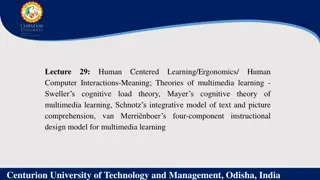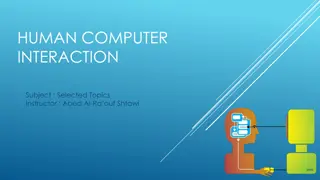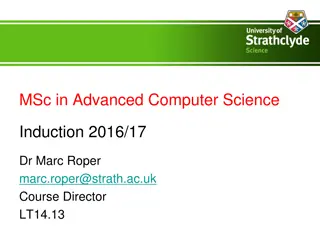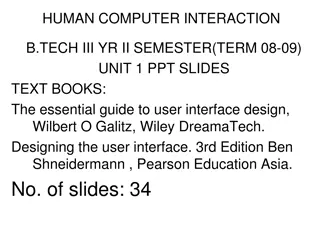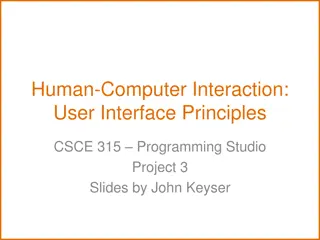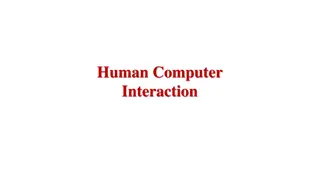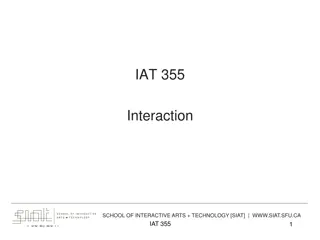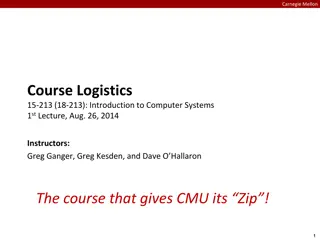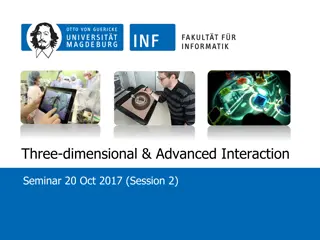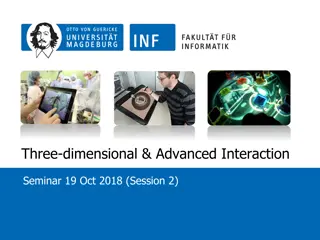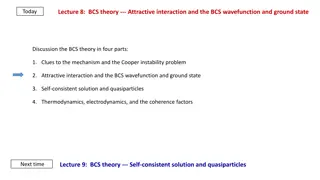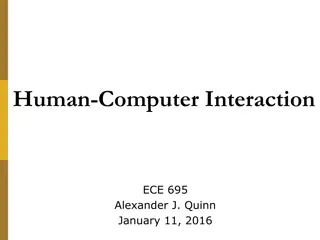Introduction to Advanced Human-Computer Interaction Course
This course introduces IT443 with a focus on Human-Computer Interaction (HCI). It covers the practical and theoretical aspects of HCI, principles of User-Centered Design, application of HCI principles to practical problems, user roles in the design process, data gathering techniques, and usability evaluation of interactive systems. The course syllabus includes primary and supplementary books on interaction design, and it outlines the grades distribution and important dates for assignments, quizzes, and exams.
Download Presentation

Please find below an Image/Link to download the presentation.
The content on the website is provided AS IS for your information and personal use only. It may not be sold, licensed, or shared on other websites without obtaining consent from the author.If you encounter any issues during the download, it is possible that the publisher has removed the file from their server.
You are allowed to download the files provided on this website for personal or commercial use, subject to the condition that they are used lawfully. All files are the property of their respective owners.
The content on the website is provided AS IS for your information and personal use only. It may not be sold, licensed, or shared on other websites without obtaining consent from the author.
E N D
Presentation Transcript
1 id-book.com Lecture 1: Introduction to IT443 (Advanced Human Computer Interaction)
2 id-book.com Course Instructor Dr. Balsam AlSugair Office: 6T60 Office Hours: Sunday : 9-10, 12-1 Tuesday: 9-10, 12-1 Wednesday: 10-12 By Appointment only Thursday: 9-10, 12-1 Email: balsugair@ksu.edu.sa Webpage: fac.ksu.edu.sa/balsugair/
3 id-book.com Course Syllabus (1/2) Primary Books: Interaction Design: Beyond Human Computer Interaction, by Y. Rogers, H. Sharp, J. Preece, 4TH Edition, Wiley (2015). Source: eu.wiley.com Source: quepublishing.com Dynamic Prototyping with SketchFlow in Expression Blend: Sketch Your Ideas and Bring Them to Life, by Chris Bernard & Sara Summers.
4 id-book.com Course Syllabus (2/2) Supplementary Materials: Human-Computer Interaction, by Alan Dix et al, 3rd Edition, Prentice Hall (2004). Designing the User Interface: Strategies for Effective Human-Computer Interaction, 4th Edition, Shneiderman and Plaisant , Addison-Wesley (1998). Measuring the User Experience: Collecting, Analyzing, and Presenting Usability Metrics, by Tullis and Albert, Interactive Technologies (2008).
5 id-book.com What is HCI? Human-Computer Interaction draws on the fields of computer science, psychology, cognitive science, and organizational and social sciences in order to understand how people use and experience interactive technology. HCI applies this understanding in the design, evaluation and implementation of interactive technologies for human users.
6 id-book.com Course Outcomes By the end of this course you will be able to: Understand the practical and theoretical aspects of Human Computer Interaction (HCI) Recognize and outline principles related to HCI and User Centered Design (UCD) Apply HCI principles to practical problems Understand the role of users in the design process Use data gathering techniques to analyze and design solutions for applications Evaluate the usability of interactive systems
7 id-book.com Grades Distribution MidTerms : 30% Quizes: 7% Assignment: 3% Project: 20% Final Exam: 40%
8 id-book.com Important Dates !! Assignment: Due Sunday 9 Oct 2016 Quiz 1: aroundWeek 5 exact date TBC Midterm 1 : Tuesday 8 Nov. 2016 (8 Safar 1438H) 3-5 pm Quiz 2: around Week 10 exact date TBC Midterm 2 : Tuesday 13 Dec. 2016 (14 Rabi I 1438H) 3-5 pm Final Exam : FinalsWeek 3 Tuesday 8-11 am (Period 21)
9 id-book.com Considerations If you have any questions during the lecture, please raise your hand to alert me. Please be on time! Lectures will begin on the hour Attendance will be recorded Deadlines (assignment, project phases, etc. )are final! Office Hours are in place to support you, please make use of them






